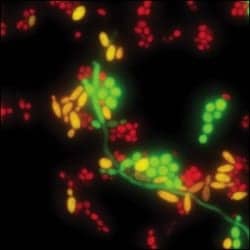A leader in the field of in vitro diagnostics, bioMérieux recently announced that it will be expanding its production capabilities at its US headquarters in Durham, NC. The new production line will be the fourth line for the company’s BacT/Alert 3D culture products.
The BacT/Alert product line represents a critical component in the diagnostics pathway for the detection and identification of bloodborne infections, a growing public health threat. The company’s expansion will increase production to meet increasing global demands. The company expects to spend more than $48 million and create 44 new positions at the facility. Special guests in attendance for the groundbreaking included Carl Flatley, DDS, founder of the Sepsis Alliance, and Alexandre Mérieux, CEO of bioMérieux.
Every year, severe sepsis strikes about 750,000 Americans.1 It has been estimated that between 28% and 50% of those patients eventually die from the condition—far more than the number of US deaths from prostate cancer, breast cancer, and AIDS combined.2 In 2011, sepsis resulted in an aggregate healthcare cost of $20.3 billion for US hospitals, making it the most expensive condition treated in hospitals.3 Sepsis patients typically require nearly 20 days of hospitalization. CDC researchers found that sepsis hospitalizations increased by more than 300% from 1979 (164,000 cases) to 2000 (660,000 cases).4
Blood culture bottles are used as an integral part of sepsis diagnosis to detect bloodborne pathogens and to serve additional downstream applications for identification and antibiotic susceptibility testing in microbiology labs. “This new production line for our BacT/Alert blood culture bottles represents a significant investment for our Durham manufacturing facility,” said Stefan Willemsen, president and CEO of bioMérieux Americas. “It is critical that we continue to invest in our technologies to meet customer demands and work together to fight the growing threat of sepsis and of antibiotic resistance.”
“It has been over 14 years since my young daughter, Erin, died so needlessly from sepsis,” said Flatley. “At the time, virtually no one outside of critical care medicine really understood what sepsis was. Since then, we’ve managed to educate many about sepsis. A state law passed in New York mandating a statewide sepsis protocol, and the CDC just launched a dedicated website on sepsis awareness. However, we still have no universal cure, which makes early detection and diagnosis so critical.”
bioMérieux is the manufacturer of the Vidas Brahams procalcitonin assay, cleared by FDA in 2007. It is intended to aid in the risk assessment of critically ill patients on their first day of ICU admission for progression to severe sepsis and septic shock, and is an important part of leading hospitals’ protocols for sepsis. bioMérieux also produces instruments for the rapid detection of potentially harmful bacteria, such as those that can produce severe infections that lead to sepsis.
“The company’s motto is ‘Pioneering Diagnostics’,” observed Flatley, “and I can attest to the fact that bioMérieux is committed to developing and bringing to market innovative new technologies to detect sepsis at the earliest possible stages. Whether here in the US or in developing nations, bioMérieux is working globally to reduce sepsis mortality.”
bioMérieux expects construction to be complete by late 2016. For further information, visit bioMérieux.
References
1. Angus DC, Linde-Zwirble WT, et al. Epidemiology of severe sepsis in the United States: analysis of incidence, outcome, and associated costs of care. Crit Care Med 2001.
2. Wood KA, Angus DC. Pharmacoeconomic implications of new therapies in sepsis. PharmacoEconomics 2004;22(14):895–906.
3. Torio C, Andrews R. National Inpatient Hospital Costs: The Most Expensive Conditions by Payer. Statistical brief no. 160. Healthcare Cost and Utilization Project (HCUP), August 2013.
4. Martin MS, Mannino DM, et al. The epidemiology of sepsis in the United States from 1979 through 2000. N Engl J Med 2003;348:1546–1554.






